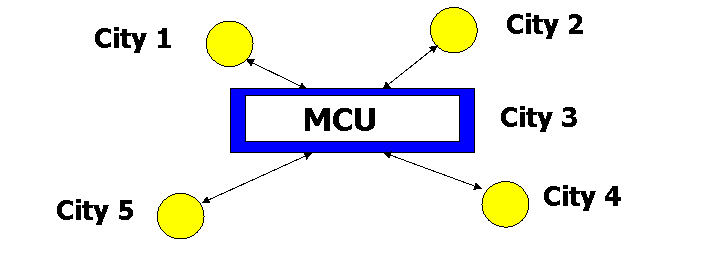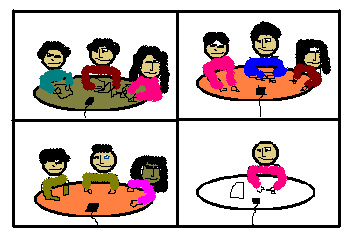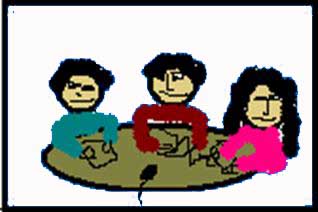3. The Terminology
Let's first repeat what the basic equipments used are:
- Codec - central unit that compresses outgoing and decompresses
incoming video signal
- Digital camera - records pictures from your room
- Microphone - records the sound in your room
- Monitor with loudspeakers - see and hear the far end part(s)
Additionally, some additional peripherals are useful:
- Document camera
- Digital whiteboard and a video projector
- Laptop or stationary PC
- VHS/DVD-player
MCU - Multipoint Control Unit
The MCU - Multipoint Control Unit - is a unit that connects
more than two parts in a videoconference. The unit is referred
to as a bridge, as it connects 3 or more incoming and outgoing
video signals. A MCU bridge operates on a mix of both ISDN
and IP connections simultaneously.

Advanced video codecs (group systems) may have an internal
MCU. These built-in MCUs have limited capacity with respect
to bandwidth. If the demand for multi-part conferences is
substantial, it may be profitable to buy a separate MCU bridge.
But it should really be substantial, as MCUs are rather expensive.
A better solution can be, at least at an early stage, to hire
access to a MCU bridge from companies that have specialized
on MCU services.
Monitor view in multipart conferences
The main operator decides which monitor view is to be shown.
 |
This monitor view is called "continuous presence", which implies that the screen
is divided into several parts and everyone see each other. |
 |
Here another monitor view is chosen. Only one of the participating groups is visible to all
parties, either by the choice "voice activated camera view" or "assign floor". |
|

